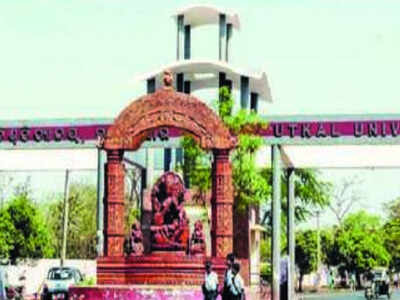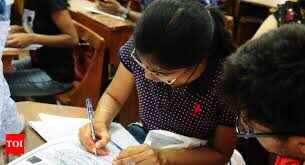
BHUBANESWAR: Undergraduate or Plus III students will have to answer exams on a new pattern from this year. The new question papers will have long, medium, short and objective-type questions.
"The higher education department has implemented the model syllabi for undergraduate courses from this year. Each course has four units and questions will come from each of them," said Asoka Kumar Das, vice-chairman of Odisha State Higher Education Council.
He said the question pattern had been changed so that students were forced to cover more of the syllabus. "Students will face a new pattern of questions from this educational year. The paper will have objective questions with multiple choices, short questions seeking answers in 50 words, medium questions and four long questions from all four units," he added.
Earlier, students would not cover the full syllabus before sitting for examinations due to the nature of the questions set by the universities. For example, long questions had multiple choices and students would answer them by reading two or three units of the subject. "But the new pattern will have two questions from every unit and students will have to answer one of them. They have to cover all units before appearing for the examinations," said Das.
The pattern will have four long, eight medium, 12 short and 12 objective (yes/no-type) questions. "It is set in such a way that students cannot leave even a single unit of the syllabus," said Das.
The department has also made project presentation option. Students securing more than 60 per cent in the first and second semester can take any project and submit it. "If anybody is not interested in projects, she/he can study a subject and appear for the examination. Projects were made optional after several students copied their project ideas from other places," said a teacher.
As part of examination reform, the higher education department has planned to increase the honorarium of evaluators from Rs 10 to Rs 20 to Rs 30 per paper. It will also increase payment of question setters to Rs 1,000 per paper.
"The higher education department has implemented the model syllabi for undergraduate courses from this year. Each course has four units and questions will come from each of them," said Asoka Kumar Das, vice-chairman of Odisha State Higher Education Council.
He said the question pattern had been changed so that students were forced to cover more of the syllabus. "Students will face a new pattern of questions from this educational year. The paper will have objective questions with multiple choices, short questions seeking answers in 50 words, medium questions and four long questions from all four units," he added.
Earlier, students would not cover the full syllabus before sitting for examinations due to the nature of the questions set by the universities. For example, long questions had multiple choices and students would answer them by reading two or three units of the subject. "But the new pattern will have two questions from every unit and students will have to answer one of them. They have to cover all units before appearing for the examinations," said Das.
The pattern will have four long, eight medium, 12 short and 12 objective (yes/no-type) questions. "It is set in such a way that students cannot leave even a single unit of the syllabus," said Das.
The department has also made project presentation option. Students securing more than 60 per cent in the first and second semester can take any project and submit it. "If anybody is not interested in projects, she/he can study a subject and appear for the examination. Projects were made optional after several students copied their project ideas from other places," said a teacher.
As part of examination reform, the higher education department has planned to increase the honorarium of evaluators from Rs 10 to Rs 20 to Rs 30 per paper. It will also increase payment of question setters to Rs 1,000 per paper.
Quick Links
Lok Sabha Election Schedule 2019Lok Sabha Election NewsDelhi Capitals teamMI team 2019Rajasthan Royals 2019RCB team 2019Maharashtra Lok Sabha ConstituenciesBJP Candidate ListBJP List 2019 TamilnaduShiv Sena List 2019AP BJP List 2019Mamata BanerjeeBJP List 2019 MaharashtraPriyanka GandhiBJP List 2019 KarnatakaAMMK Candidate List 2019BJP List 2019 WBLok Sabha Elections in Tamil NaduBSP List 2019 UPNews in TamilLok Sabha Poll 2019Satta Matka 2018PM ModiMahagathbandhanNagpur BJP Candidate ListChandrababu NaiduTamil Nadu ElectionsUrmila MatondkarNews in TeluguMadras High CourtTejashwi YadavArvind KejriwalTejasvi SuryaPawan KalyanArvind KejriwalYogi AdityanathJaya PradaSatta King 2019Srinagar encounter
Get the app







